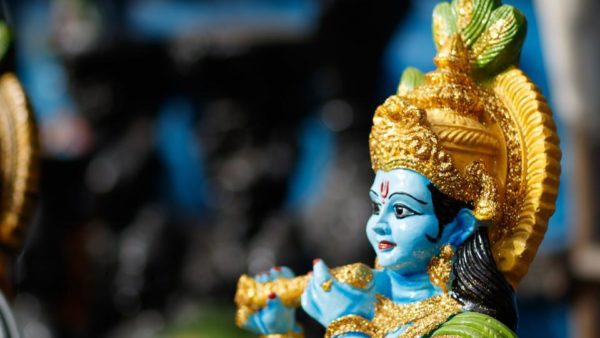Every year, on Janmashtami (August 14 this year), we celebrate the birth of Lord Krishna. He was born on ‘ashtami’, that is, the eight day of the holy month, Shravana (as per the Hindu Lunar calendar).
On Janmashtami, people excitedly discuss the story of his birth and the amazing circumstances that surrounded it. In many Indian homes, idols of baby Krishna are bathed in milk, honey and water, and dressed in new clothes. Devotees also visit temples and offer prayers to Krishna.
The significance of Janmashtami:
Many many years ago, Mathura (in present day Uttar Pradesh) was in great distress while being ruled by King Kansa. The evil king’s sister, Princess Devaki had been married to Vasudev. However, according to a prophecy it was believed that Devaki’s eighth child would be the one who would end Kansa’s rule, and kill him. Fearing for his life, Kansa put Vasudev and his sister behind bars.
He killed Devaki’s first six children as they were born. However, the seventh child, who was believed to have been miscarried, came to be in Princess Rohini’s womb in Vrindavan (in present day Uttar Pradesh), growing up to be Krishna’s elder brother Balram. When the eight child, Krishna, was born, it is said that the gods themselves helped Vasudev carry the baby to his cousin and sister-in-law, Nanda and Yashoda’s house in Vrindavan, where they would raise Krishna as their own son. There was heavy rain and thunder that day, amidst which Vasudev carried Krishna on his head through the Yamuna River. Shesh Nag (Snake God) himself arose and sheltered Krishna and Vasudev through the storm and choppy waters. After reaching Nanda’s house, Vasudev kept Krishna there, and came back with the girl that Nanda had been blessed with on the same day.
He hoped she would be saved since Kansa had believed that the eight child would be a boy, who would eventually kill him. But Kansa did try to kill her by throwing her against a rock; however, she rose in the form of the Goddess Durga, and warned him that he would face death at the hands of Krishna. As prophesied, Krishna ended Kansa’s life years later and Mathura was safe again.
Rituals observed during Janmashtami:
Lord Krishna’s devotees fast on Janmashtami and eat only one meal a day before. The Krishna Abhishekam is performed (milk, ghee and water is used) and they offer ‘bhog’ to Krishna.
What is Chappan Bhog?
After sunset, hymns are sung praising Krishna and devotes break their fast after midnight. On the next day, which is referred to as ‘Nanda Utsav’, the devotees put together 56 food items, referred to as ‘Chappan Bhog’. Post fasting, these items are distributed amongst the people. Some of the items present in the bhog are kheer, jalebi, malpua and dahi.



Leave a reply